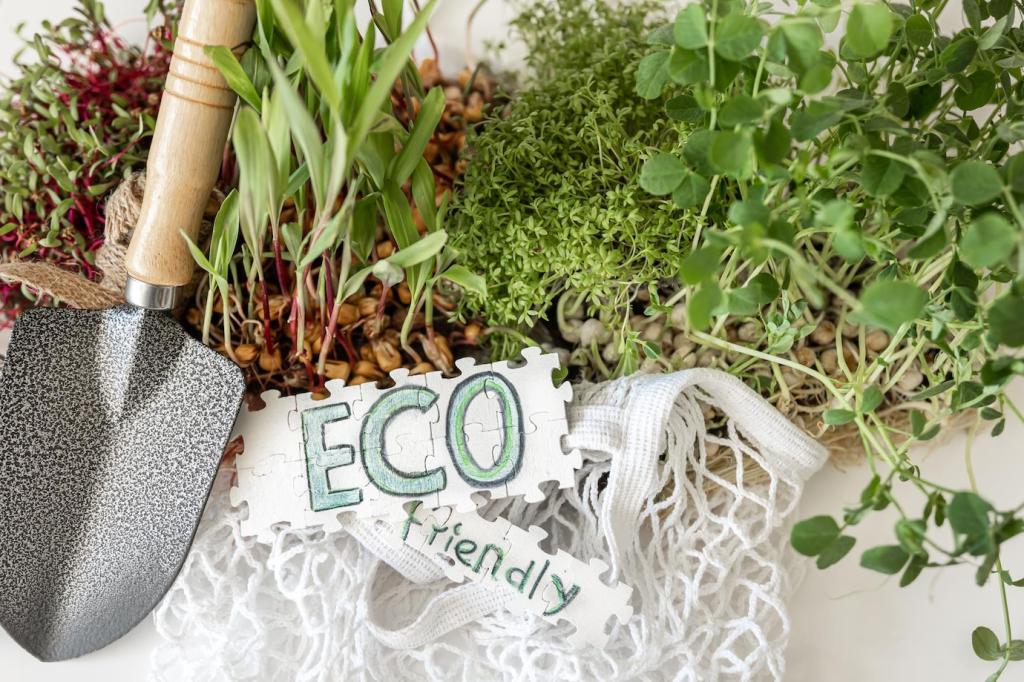Eco-Friendly Furniture Recycling and Disposal Options
Chosen theme: Eco-Friendly Furniture Recycling and Disposal Options. Welcome to a greener way to say goodbye to bulky items and hello to circular living. We’ll show practical paths that keep furniture out of landfills, honor materials, and support local communities. Join the conversation, share your tips, and subscribe for fresh ideas to make every furniture transition sustainably smart.
From Landfill to Lifespan Extension
Every year, millions of tons of furniture head to landfills, despite reusable wood, metal, and fabric hiding inside. Extending lifespan through repair, donation, and material recovery is one of the fastest ways to cut waste. Tell us your best save: which piece did you rescue and how long did it last afterward?
Carbon and Chemical Footprints
Manufacturing furniture often involves energy-intensive processes and adhesives, finishes, and foams. Recycling captures embodied energy, while careful disposal prevents off-gassing and leaching. Choosing low-VOC pieces and responsibly breaking down old items lowers emissions today and tomorrow. Comment with your favorite low-impact brands or finishes you trust.
Recycling Pathways by Material
01
Solid wood can be planed, refinished, or chipped for mulch and panel stock, while engineered wood requires careful handling because of glues and resins. Deconstruct pieces to separate paints, hardware, and composite sections. Ask recyclers which coatings they accept. Post a photo of your wood haul, and we’ll suggest safe reuse or recycling routes.
02
Steel frames, aluminum legs, and brass handles are highly recyclable, often with strong scrap value. Remove metal fasteners, sort by type, and keep them clean and dry. A magnet quickly distinguishes steel from nonferrous metals. Drop a comment if you’ve tried a metal buy-back program and how you organized your bins.
03
Upholstery blends can be tricky, but foam cushions may be rebonded, and certain fabrics repurposed as moving blankets or insulation. Identify plastic parts by resin codes if visible. Keep materials dry to avoid contamination. Tell us your toughest fabric challenge and we’ll crowdsource repair, recycling, or creative upcycling ideas.
Responsible Disposal When Recycling Isn’t Possible
Check your city’s bulky-waste schedule, booking rules, and preparation steps. Many require disassembly, clear labeling, and protection from rain. Confirm whether they divert items to material recovery facilities. Share your location in the comments, and we’ll point you toward official guidelines and any seasonal events that accept furniture.
Responsible Disposal When Recycling Isn’t Possible
Some brands offer take-back programs for office chairs, desks, and modular systems. Ask customer service about refurbishment or material recovery pathways. Keep receipts or item tags handy to confirm eligibility. If you’ve used a take-back service, tell us how it went and whether the provider offered reuse documentation.
Responsible Disposal When Recycling Isn’t Possible
Photograph sorted materials, keep receipts, and log where items went. Documentation helps with building certifications, office move-outs, and tax deductions for donations. It also builds a repeatable playbook. Download our checklist by subscribing, and reply with any steps we should add from your experience.


Donation, Repair, and Upcycling Stories
One reader turned a cracked dresser into a hallway reading bench by salvaging the top, reinforcing the base, and upholstering a cushion from retired curtains. It saved disposal fees and added character to a small space. Share your before-and-after photos and we may feature your project in our next edition.
Donation, Repair, and Upcycling Stories
Repair cafés invite neighbors to fix wobbly chairs, re-glue joints, and replace drawer slides. Volunteers share tools and skills, making repairs safe and social. Look for meetups at libraries or community centers. Comment with your city, and we’ll spotlight upcoming events where you can get hands-on help.
How to Plan an Eco-Friendly Removal Day
List every item, note materials, and mark condition: repairable, donatable, recyclable, or disposal-only. Measure doorways and stairwells to avoid damage. Photograph labels and hardware. Share your inventory template requests, and we’ll send a printable version when you subscribe to our sustainable move series.
How to Plan an Eco-Friendly Removal Day
Remove legs, cushions, glass, and hardware before moving large pieces. Unscrew rather than force, capturing reusable components in labeled containers. Deconstruction yields cleaner material streams and safer lifting. Comment with your favorite hand tools and we’ll compile a community-approved toolkit for greener furniture removal.

Tools, Directories, and Apps That Make It Easy
Use regional recycling directories, community sharing groups, and donation finders to match items with the right destinations. Search by material, verify acceptance policies, and read preparation tips. Drop your zip or city in the comments, and we’ll suggest reputable platforms readers have successfully used.
Look for resin codes on plastics, solid-wood stamps, and care tags on upholstery. These clues guide disassembly and disposal. Keep a small reference card taped to your toolbox. Ask us about a material you’re unsure of and we’ll help you identify the safest, greenest next step.
Local rules change, and new take-back programs appear frequently. Subscribe for quarterly updates, printable checklists, and reader-tested hacks for eco-friendly furniture recycling and disposal options. Reply with topics you want covered next, from mattress recycling to office chair refurbishment.

